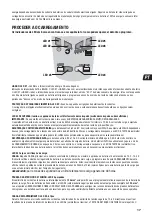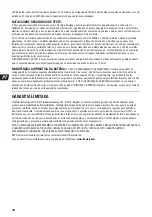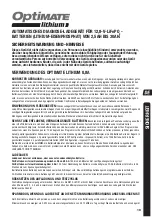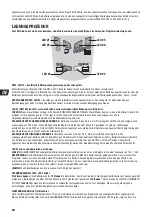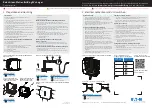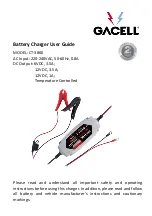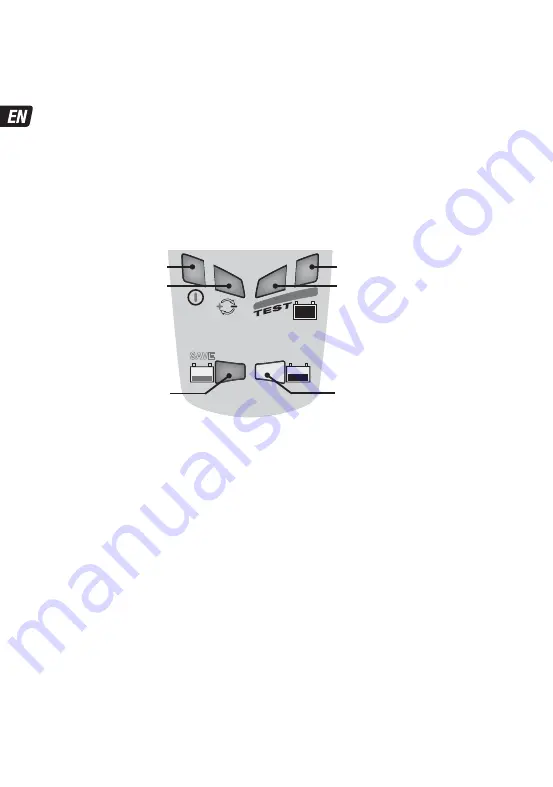
6
consumption depends on the current demand of the battery and its connected vehicle /
electronic circuitry. After the battery has been
charged and the charger is in long term maintenance charge mode (to keep the battery at 100% charge) the total power consumption is
estimated to be 0.024 kWh or less per day.
CONNECTING THE CHARGER TO THE BATTERY
1. Disconnect AC power supply before making or breaking DC / battery connections.
2.
If charging a battery in the vehicle with the battery clips, before making connections, first check that the battery clips can be safely
and securely positioned clear from surrounding wiring, metal tubing or the chassis. Make connections in the following order:
First connect to the battery terminal not connected to the chassis (normally positive),
then connect the other battery clip (normally negative) to the chassis well away
from the battery and fuel line. Always disconnect in reverse sequence.
3.
When charging a battery out of the vehicle with the battery clips, place it in a well ventilated area. Connect the charger to the battery:
RED clamp to POSITIVE (POS, P or +) terminal and BLACK clamp to NEGATIVE (NEG, N or –) terminal. Make sure the connections are
firm and secure. Good contact is important.
PROCEEDING TO CHARGE
The LED indicators below are sequenced as they may come on through the course of the program.
POWER ON: LED #1
-
Confirms AC power supply to the charger.
HIGH and LOW intensity indication: The"POWER ON" LED #1 will indicate brightly when current is delivered to the battery.
The "POWER ON" LED #1 will reduce intensity to a low level to indicate low power "ECO" mode. This will occur if there is no battery
connected, or when a battery is connected and the program finds itself in the voltage retention test mode or the 'rest' periods of
Maintenance Charge mode.
REVERSE POLARITY PROTECTION: LED #2
- Lights when the battery connections are incorrect. The charger is electronically protected so
no damage will result, and the output will remain disabled until the connections are corrected.
LED #3 SAVE lights If the battery is extremely flat (deep-discharged),
IMPORTANT:
If this mode engages read the section VERY FLAT NEGLECTED BATTERIES .
This mode engages if the battery was more than 90% discharged / voltage is below 12.8V. Charge current is automatically adjusted
according to voltage measured .
VERY LOW VOLTAGE SAVE
for batteries between 0.6V and 8.8V: Current starts at 200mA and will increase to 325mA depending on charge
progress. If the voltage did not rise above 8.8V within 2 hours, charging will be suspended and the TEST LED #6 (red) will flash, indicating
the battery may have suffered permanent damage or a professional assessment is required.
LOW VOLTAGE SAVE
for batteries between 8.9V and 12.8V: Maximum current is set to 0.8A. The battery's charge acceptance is monitored
for unusual behaviour. A healthy LiFePO4 battery will progress to CHARGE mode within 4 hours, otherwise charging will be suspended and
TEST LED #6 (red) will flash, indicating the battery may have suffered permanent damage or a professional assessment is required.
LED #4 Charge and charge verification
CHARGE:
The BULK CHARGE stage delivers a constant current of about 0.8 Amps maximum into the battery, up to a voltage of 14.2 -14.4V.
CHARGE
SAVE
SAVE
LED #5
LED #6
LED #1
LED #2
LED #3
LED #4

















